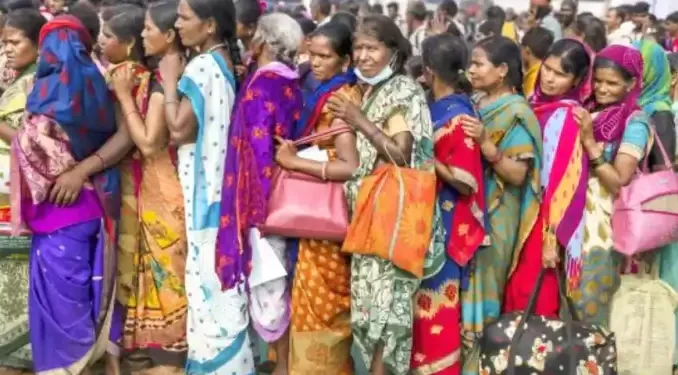India is poised to become the most populous nation on Earth, surpassing long-time titleholder, China. But with the demographic changes come both major opportunities and challenges.
Oshrit Birvadker, ISRAEL HAYOM

India’s population keeps increasing by a million every month | File photo: AP
The complex relationship between India and China is not a new matter, with the two countries constantly engaging in competition. Data-wise, China seems to be leading in aspects: territory, defense, budget, navy, and the middle class.
But according to estimates, this coming April India will snatch away from China the title of being the most populated country on Earth. For the first time since the 1950s, a country other than China will hold the title.
China has gone through a significant population shrinkage in recent years, greater even than those experienced by Japan or South Korea. In 2022, China’s population decreased for the first time in six decades, a historic turn that has significant implications for its economy.
It will also lead to a change in the country’s age profile, with the dominant class no longer being working-age citizens, but the elderly. By 2050, the number of Chinese over the age of 65 is expected to double.
In contrast, India’s population has more than tripled in the last several decades since the partition from Pakistan – from 361 million in 1951 to over 1.4 billion today. And the population keeps increasing by a million every month.
More women, fewer men
Given the social practice of favoring men in India, it is an excellent opportunity to observe the place of Indian women in the demographic picture and the changes that have taken place in the country over the past 75 years, especially in the context of female fertility and mortality rates.
Female mortality rates in India are a product of social factors, compared to the biological factors that may explain male mortality rates. Tradition, religion and economic hardship all determine whether a family is capable of raising a daughter, which is oftentimes a financial blow that leads to the choice of not having daughters at all.
As a result, India suffers from a disproportionate ratio of boys to girls, a trend that has only gotten worse in recent years. A 2011 census showed that in the age group of under 6, the ratio of boys to girls was 1,000 to 914, that is one out of every ten female fetuses does not make it to birth, or is let go of straight after birth. And yet, a survey conducted about a year ago by the Indian government showed that for the first time in history, there are more women in India than men.
Usually, female participation in the labor market is an important indicator for understanding demography and the change that has taken place in the status of women, but perhaps in the case of India, we may be dealing with an exception.
In a strange way, in recent years there’s been a decrease in their participation in the workforce, despite of – or precisely due to – India’s economic growth. And this pattern is evident both among women in central and rural areas.
The reason lies in the fact that the expansion of women’s access to education did not undermine societal normal too much but actually allowed them to upgrade within the system. Studies show that women with a secondary education married men who were more educated and had a higher family income, which reduced their incentives to join the workforce.
In fact, a wife not working is considered a sign of high social status, and with the increase in the number of new millionaires and the expansion of the middle class in India, their number is increasing. Ironically, the participation of women in the country’s labor market before independence was actually higher.
India’s economic growth process has also led to several changes in favor of women. The reforms of the 1990s, which opened the Indian economy to the world and led to the expansion of the country’s service sector, led to the improvement of infrastructure that benefited women.
The opening of phone service centers owned by Western companies accelerated the entry of millions of them into the labor market. The nature of office work and the employee training programs made them attractive among young women and were approved by husbands and parents as well.
And as the round-the-clock shifts required the arrival of female workers at night time, the transportation services – including from remote areas – improved as a result.
The streets too were made safer through lights and infrastructure that were given the slogan “toilets before temples” under Narendra Modi’s election campaign in 2014.
Until recently, in various regions throughout India and even in the big cities, women hardly left their homes after sunset due to the dangers that the darkness of the night brings with it.
Like in Israel
Demography is not destiny and is not part of India’s dharmic law, and what will ultimately decide India’s position in the world and vis-à-vis China will be the courses of action that Delhi decides to take.
To enjoy the demographic dividend, India will have to find productive work for its millions of young people. The growth will put enormous pressure on its resources, economic stability, and society, and the consequences will reach far beyond its borders.
As a country at the forefront of the climate crisis, which already faces extreme weather events 80% of the year, dwindling resources like water could become decisive factors in what India’s future population will look like. As a country that looks at Israel as a model of security, and economic and agricultural success, it would be right to remember that Israel did this with the help of its own women.



Leave a Reply
You must be logged in to post a comment.